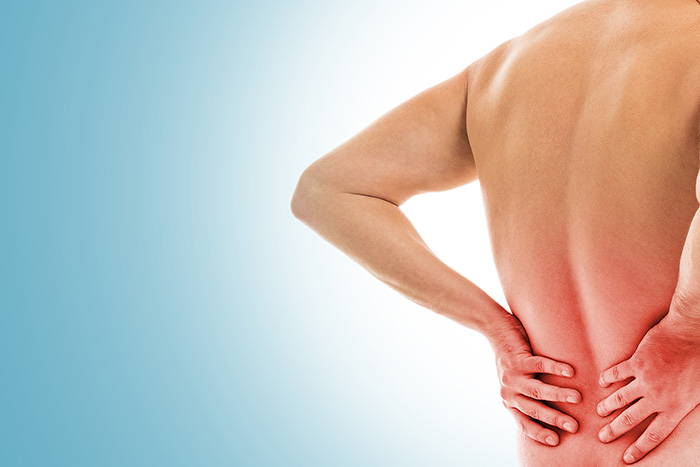What is joint and back pain?
Most people suffer from back or joint pain from time to time. It may be caused by sprain, strain or muscle overuse. However, pain is a symptom of many conditions so its exact cause may sometimes be unknown.
Signs and symptoms of joint and back pain may include:
- Muscle ache
- Shooting, stabbing pain
- Pain that worsens with bending, lifting, standing or walking
- Pain that improves with reclining
- Swelling and stiffness
- Weakness or instability
- Unable to fully straighten limb
- Tenderness and warmth around the joint
How common is joint and back pain?
Joint and back pain are very common. An estimated 60% – 70% of adults will experience back pain at some point in their life. Joint pain is estimated to affect 10% – 15% of populations worldwide. Pain is more common in women and with increasing age.
Who is likely to develop joint and back pain?
You are more likely to have joint or back pain if:
- You are obese – excess weight puts extra stress on your back and joints
- You do improper and/or heavy lifting
- You are stationary for a long period of time
- You don’t exercise frequently – more prone to pain due to weak unused muscles
- You over-exercise
- You have overly forceful movements during work or sports
- You have posture problems
- You are older – back pain is more common as you age
What can I do to manage the condition?
Medicines from the shelves
There are oral medicines (Such as: Paracetamol, ibuprofen, naproxen) available over the counter in pharmacies which can be used to relieve pain. You can also consider using topical pain relievers such as creams and plasters which are also available off the shelf.
Heat or cold therapy
Using a heat pad may help to relieve muscle pain by increasing blood circulation and relaxing your muscles. Cold compresses/ice packs can help to reduce swelling and numb the pain. Try heat or cold therapy at least twice a day and see which one provides the best relief for you.
Visiting your doctor
Sometimes pain may be a sign of a serious underlying medical condition. Please visit a doctor if you have the following symptoms:
- Your pain doesn’t improve after self-treatment
- Your pain is constant and doesn’t improve with rest
- Your pain is due to a fall or other injury
- Your pain worsens over days/weeks
- Your pain is intense
- Persistent pain or sensation of numbness, pins and needles in at least 1 leg
- Weakness of legs, difficulty in walking and unsteady walking
- Bladder/bowel problems along with back pain
- Loss of appetite
- Fever
- Unexplained weight loss
- Previous history of cancer
What can I do to prevent it?
- Exercise – Regular low-impact aerobic activities (those that don’t strain or jolt your back) such as walking and swimming can increase strength and endurance in your back and allow your muscles to function better.
- Maintain a healthy weight.
- Have good posture – Don’t slouch. Choose a seat with good lower back support, armrests and a swivel base. Placing a pillow or rolled towel in the small of your back (the lower part of your back where it curves inwards) can maintain its normal curve. Keep your knees and hips level. Change your position frequently, at least every half-hour.
- Avoid heavy lifting, if possible, but if you must lift something heavy, let your legs do the work. Keep your back straight and no twisting. Bend your knees, not your back. Hold the load close to your body. Find a lifting partner if the object is heavy or awkward.
Want to find out more?
You can visit your nearest Unity pharmacy and approach the pharmacists or staff on duty for more information.
References:
- Aches and Pains. (2019, November 22). Retrieved from https://www.healthhub.sg/live-healthy/1085/aches-and-pains .
- (2019, January 3). Retrieved from https://www.healthhub.sg/a-z/diseases-and-conditions/232/arthritis .
- Back Pain. (2018, August 4). Retrieved from https://www.mayoclinic.org/diseases-conditions/back-pain/symptoms-causes/syc-20369906 .
- Lower Back Pain: Symptoms and Treatment. (2019, November 22). Retrieved from https://www.healthhub.sg/a-z/diseases-and-conditions/756/Lower-back-pain-relief .
- Neogi T. (2016). Joint Pain Epidemiology [PDF file]. Retrieved from https://s3.amazonaws.com/rdcms-iasp/files/production/public/Content/ContentFolders/GlobalYearAgainstPain2/2016/FactSheets/English/11.%20Joint%20Pain%20Epidemiology.pdf .
- World Health Organization (2013). Low back pain. In Priority Medicines for Europe and the World Update Report 2013 (Chapter 6.24). Retrieved from https://www.who.int/medicines/areas/priority_medicines/Ch6_24LBP.pdf .
- Yeo, S.N. & Tay K.H. (2009). Pain prevalence in Singapore. Annals Academy of Medicine Singapore, 38(11):937-42. http://www.annals.edu.sg/pdf/38VolNo11Nov2009/V38N11p937.pdf .



